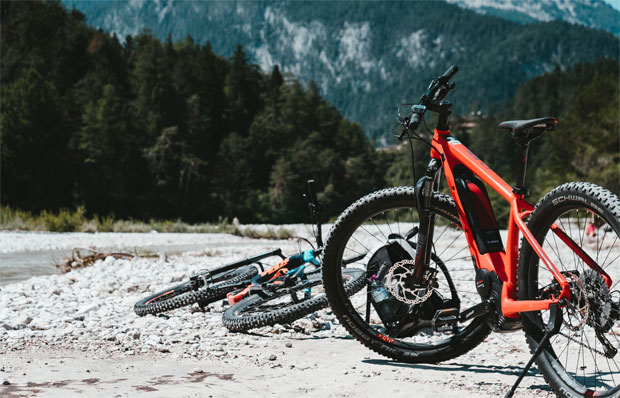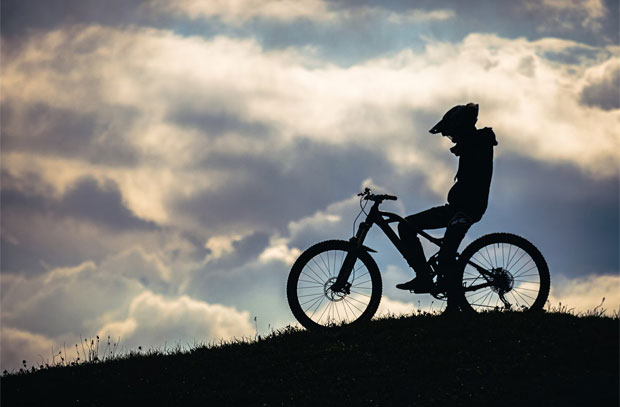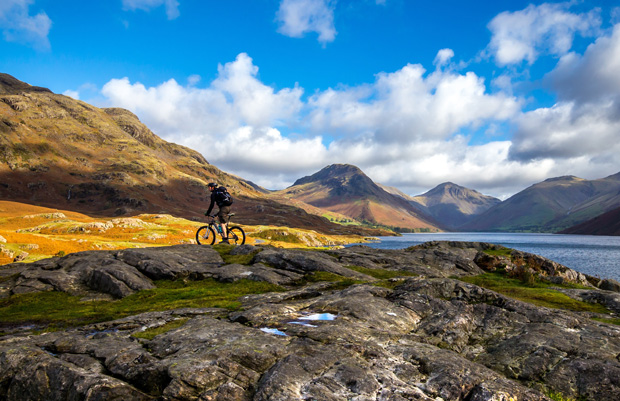Best Mountain Bikes For Beginners – 5 Things To Consider

5 Things To Consider When Finding The Best Mountain Bikes For Beginners
When selecting mountain bikes for beginners, you must carefully weigh various factors to guarantee an ideal biking experience. From determining whether an electric mountain bike or traditional model suits your child’s needs to taking into account the age-appropriate size and weight of the bike, each aspect plays an important role in their safety and enjoyment.
How these elements align with your child’s skill level and the terrain they’ll be riding on can greatly impact their biking adventures. Remember, choosing the right mountain bike involves more than just picking a cool design. It’s about finding the perfect balance between functionality and fun. Carry on reading as we break down these important factors in more detail.

Electric or Not?
When considering a mountain bike for your child, it is important to consider whether to opt for an electric model or a traditional one. Electric mountain bikes are becoming increasingly popular for beginners due to their assistance in tackling challenging terrains.
These bikes often come with adjustable speed settings, making them suitable for various skill levels. However, traditional mountain bikes for beginners are still widely available and offer a more authentic biking experience.
When examining beginner mountain bikes for sale, it is crucial to weigh the pros and cons of electric versus traditional models. Electric bikes can be a great choice for children who are just starting or those who may need assistance on uphill climbs. On the other hand, traditional mountain bikes provide a more manual and hands-on riding experience, which can help improve your child’s biking skills and physical fitness.
To discover the best mountain bikes for beginners, take into account your child’s abilities, preferences, and the type of terrain they will be riding on.

Age and Size Appropriateness
It’s important to make sure the bike fits your child comfortably to enhance safety and enjoyment. Consider the age and build when choosing a mountain bike. Getting a proper fit is important for safety and enjoyment.
For teens aged 14 to 16, 26-inch wheels are common. Aged 16 and above might prefer larger wheels, such as 27.5 or 29 inches, for better performance on rough terrain. As for sizing, they should be able to straddle the bike with both feet flat on the ground and comfortably reach the handlebars and brakes.
Frame Material and Weight
Selecting the right frame material and weight for your child’s mountain bike is essential for ensuring a comfortable and enjoyable riding experience. When choosing a mountain bike for your child, consider the frame material too. This is important as it impacts the bike’s weight, durability, and performance.
Aluminium frames are lightweight and rust-resistant, making them ideal for young riders. They are also sturdy enough to withstand the rigours of off-road trails. Steel frames, although heavier, provide a smoother ride due to their shock-absorbing properties.
The weight of the bike is important for your child’s ease of handling and control. A lighter bike is easier to manoeuvre, especially on rough terrains, allowing your child to ride with confidence and agility. Striking a balance between weight and durability is key. Opt for a bike that is lightweight yet sturdy enough to handle the demands of mountain biking.

Suspension System Consideration
Suspension systems aid in absorbing shock from bumps and uneven surfaces, providing a smoother ride. When selecting a mountain bike for your child, consider whether you prefer a full-suspension bike with both front and rear suspension or a hardtail bike with only front suspension.
Full-suspension bikes offer better comfort and traction on challenging trails but can be heavier and more expensive. Conversely, hardtail bikes are lighter, more budget-friendly, and easier to maintain, making them suitable for less aggressive trails.
Also, the suspension travel should be examined to determine how much the suspension can compress and rebound. A longer suspension travel is ideal for more technical trails, while shorter travel is adequate for smoother terrains.
Safety Features and Accessories
Assess the safety features and accessories of the mountain bike to guarantee your child’s riding experience is both secure and enjoyable. Look for essential safety elements such as sturdy brakes, preferably disc brakes for efficient stopping power in various conditions.
Make sure the bike has proper lighting, including bright front and rear lights, for enhanced visibility. This is especially important if your child rides during low-light hours. Reflectors on the wheels and pedals can also increase visibility to others on the road or trail.
Consider additional safety accessories as well. For example, a well-fitted helmet that meets safety standards to protect your child’s head in case of falls. Elbow and knee pads can provide added protection during rough rides or unexpected accidents.
A bell can be helpful for signalling others on the trail and preventing collisions. A water bottle holder can encourage hydration during longer rides. There are many safety accessories that are worth picking up, so do take them into consideration.

To Round Up Mountain Bikes For Beginners
To wrap up, when purchasing mountain bikes, be sure to take into account factors like whether to opt for an electric or traditional model, the appropriate age and size, the frame material and weight, the suspension system, and safety features. By keeping these factors in mind, you can help ensure that your child has a safe and enjoyable biking experience on any terrain.
Now you know what you’re looking for, so get yourself (and your child) to the local bike shop and start shopping with confidence!
Guest Article.




